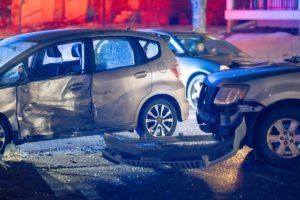Compared to other means of transportation, motorcycle accidents occur less often than car crashes or bicycle accidents. Probably due to the small number of motorcycles in the United States. Since a bike has no shield or covering from other dangerous parties on the road, its accidents are more brutal than different types of accidents, as the driver’s body is exposed. Motorcycles are small and easy to navigate, so they can sometimes be invisible to four-wheelers, which is why bikers have to be careful and aware of their surroundings when plying the roads.

A few most common types of motorcycle accidents occur due to unavoidable circumstances, which is why a motorcyclist needs mental and physical preparation before hitting the road. Always check the weather conditions (whether it might rain or snow) in your location before heading out, as harsh weather conditions cause some accidents. The best time to use a motorcycle is during the summer when the sun is out, and you do not have to worry about blurry vision.
- Lane Switching

Since a motorcycle is smaller than all types of four-wheelers, cyclists can easily switch lanes and navigate their way through the traffic or on the highway, depending on the situation. But cars and trucks can also change lanes in traffic, and sometimes, they may not see the motorcycle in the next lane. They just cut through. If the motorcyclist is not aware of his surroundings or at alert, the car trying to switch lanes can crash into the motorcycle and send the driver flying.
If you want to switch lanes as a motorcyclist, double-check that there are no forthcoming vehicles in the new lane, or make sure that the cars are moving slowly before switching to the new lane. Take all the necessary safeguards if you are avoiding motorcycle injury in Chicago.
1. Left Turn Crash
Left Turn is the most common type of accident, which might not necessarily be caused by recklessness, just by violating a few precautions. It occurs when a four-wheel vehicle tries to make a left turn, and a motorcycle from the other lane comes barreling through, crashing into the vehicle. The motorcyclist may sustain major or multiple injuries, if not death, which is why it is essential to follow certain precautions when moving towards an intersection:
- Always lean towards the pedestrian lane when approaching an intersection.
- Avoid speeding through a corner, as you may crash into an oncoming vehicle.
- Be aware of other vehicles, pedestrians, and cyclists, and drive slowly.
- Follow traffic rules and regulations, and only move when you see a “go” signal.
2. Drunk Driving

Drunk Driving is one of the most common causes of road accidents, which is why it violates road safety regulations. Drivers plying the highways under the influence are reckless because their vision is blurry and unsettled, especially at night. If you know you are going to a night party or a bar, contact a sober driver to take you home, and try not to hop on your motorcycle. You can even call 911 if you are drunk out of your mind. An officer might help take you home.
3. Head-on crash

This type of accident does not occur regularly, except in a one-way setting, as there is nothing dividing the vehicles moving forward from the ones moving backward. When a motorcycle crashes into an oncoming vehicle, the driver would most likely not survive the crash or sustain catastrophic injuries. To avoid crashing into an oncoming vehicle:
- Avoid over speeding in one-way traffic. It can be fatal.
- Maintain the lane with vehicles going in your direction and avoid branching into the opposite lane to try and beat the traffic.
- Always ride close to the pedestrian area. Forgo leaning towards the opposite lane.
- Wear protective gear like a helmet, boots, goggles, gloves, a thick suit, etc., to minimize the impact of a crash if there is one.
4. Corner Turning Accident
Turning a corner could be dangerous for motorcyclists, as they can encounter any minor or major obstacle. Since the tire of a motorcycle is not as big as that of a four-wheeler, hitting a pothole or a small patch of gravel may cause a clash. The tire can easily sway the motorcycle in an uncomfortable direction, sending the driver crashing to the ground. To avoid corner turning accidents:
- Reduce your motorcycle speed to the minimum when approaching a corner.
- Drive slowly so that you can study the condition of the road before taking a turn.
- Bend at a good angle to avoid falling to the ground when turning a corner.
- Make sure you have the right grip on your motorcycle, as they are lightweight compared to other vehicles.
Conclusion
Although unforeseen circumstances can also cause accidents, you must take precautions before hitting the road. Check the weather condition and wear protective gear. Follow road safety rules and regulations and maintain a safe lane. Call a sober driver to pick you up if you know you are under the influence. These simple steps can make the road safer for you and other drivers on the highway.











